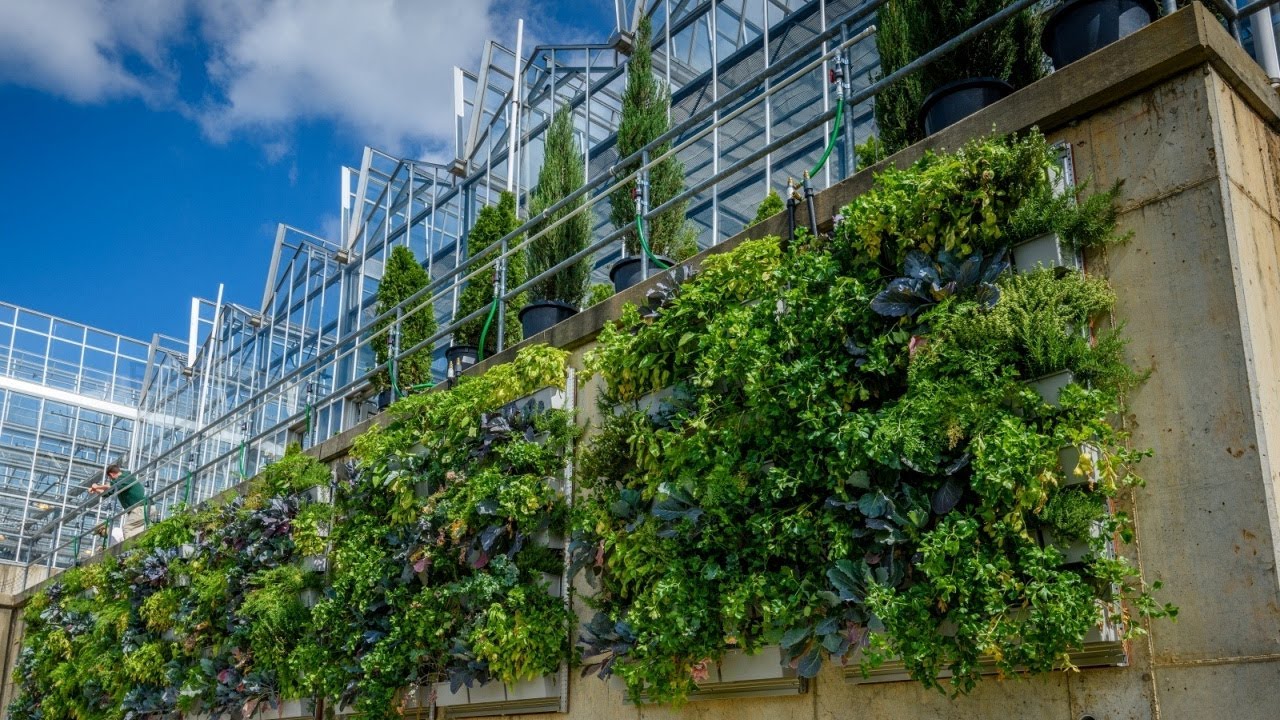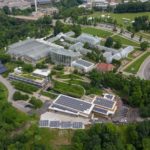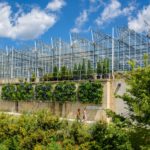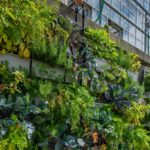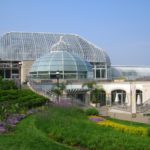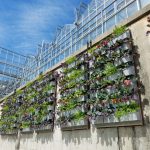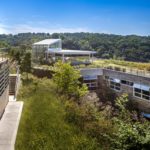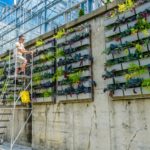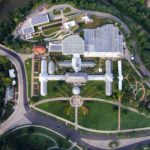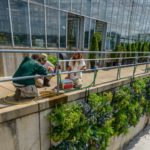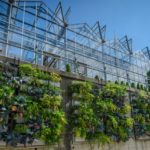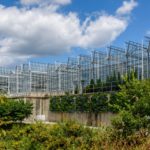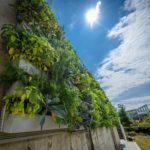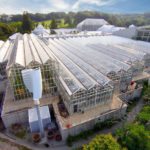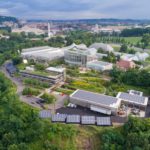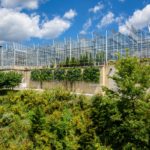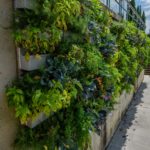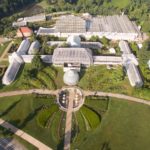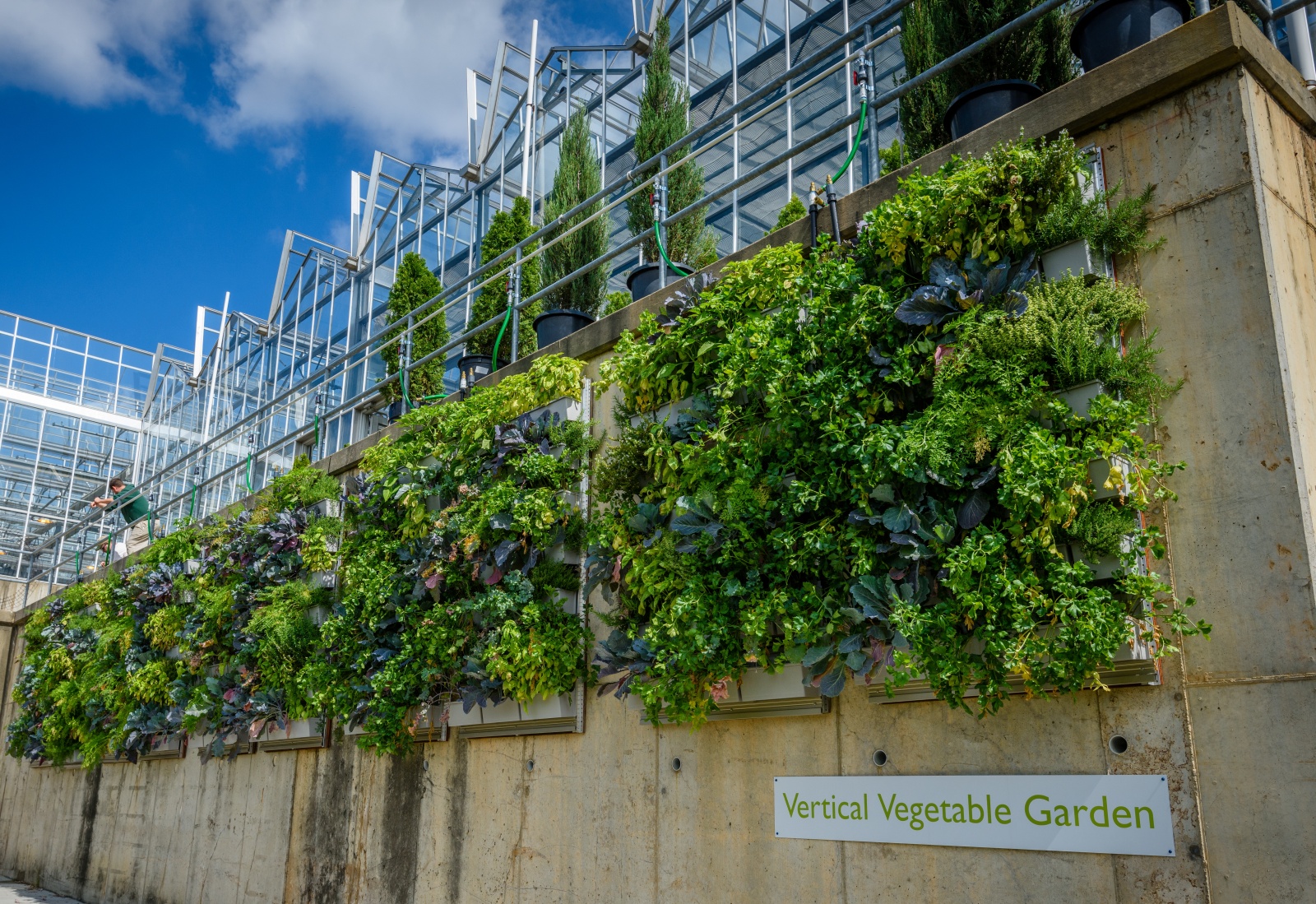
Additional Resources
Visit the Phipps Conservatory and Botanical Gardens website and their Production Greenhouse page; download the Green Healthy Spaces: A Summary of Sustainable Efforts at Phipps (PDF).
Learn about LiveWall in The Greenroofs.com Directory.
Case Studies
LEED BD+C: New Construction v2 – LEED 2.0 Phipps Conservatory and Botanical Garden profile from the U.S. Green Building Council.
Video
Watch the 3:16 Phipps Conservatory Production Greenhouse Living Walls – Featured Project Replay video from Greenroofs.com on the greenroofsTV channel on YouTube; 3:20 Phipps Conservatory Production Greenhouse Living Walls – Project of the Week 11/20/17 video from Greenroofs.com.
News
March 9, 2022 Featured Project: Phipps Conservatory Production Greenhouse Living Walls by Linda Velazquez in Greenroofs.com; 2020 A New Beginning (1993 – Present) within The Story of Phipps at Phipps; September 24, 2018 Phipps Conservatory a Nationally Recognized Leader in Sustainability by Doug Oster in everybody gardens; November 19, 2017 Project of the Week for November 20, 2017: Phipps Conservatory Production Greenhouse Living Walls by Linda Velazquez on Greenroofs.com; November 19, 2017 Phipps Conservatory Showcases Vertical Gardening with LiveWall by Amber Ponce and David Aquilina on Greenroofs.com.
Founded in 1893, Phipps Conservatory and Botanical Gardens has been Pittsburgh’s green oasis for more than 120 years. Today, the LEED Silver Conservatory (2006) is a green leader among public gardens – recognized for its commitment to sustainability including environmental conservation, renewable energy, green building design, and healthy living.
Built in 2006, Phipps Conservatory’s 36,000-square-foot Production Greenhouse earned LEED Platinum for Existing Buildings: Operations and Maintenance in 2012. Becoming the first greenhouse in the world to achieve this certification, it is also one of approximately 20 buildings across the globe to reach the Platinum level.
“In this energy-efficient work space, the temperature, light levels and humidity are all Argus computer controlled, allowing the production staff to maintain 16 different climate-controlled environments within eight ranges, enabling us to grow a wider variety of plants than was ever possible before.” ~ Phipps Green Innovation
Phipps offers a variety of programs, classes and events to educate visitors about local food production and healthy eating. In addition, Phipps sponsors Homegrown, an outreach program dedicated to increasing community access to fresh produce, promoting better food choices, and improving the health of families. Since 2013, the program has established more than 200 vegetable gardens in urban and underserved neighborhoods. The latest step forward in Phipps’ outreach mission is the installation of LiveWall Green Walls.
Phipps is using its living walls to demonstrate how families and community groups can grow their own fresh, healthy produce even where garden space is limited.
“Limited space can be a challenge for urban gardening,” said Michael Bechtel, display horticulturist, Phipps Conservatory and Botanical Gardens. “With our green walls, we have the opportunity to study, evaluate, and learn about growing edibles on space-efficient vertical gardens.”
“This forward-thinking approach enables Phipps to offer education and assistance to homeowners, schools and community organizations on installing and maintaining their own living walls to grow fresh produce,” said Dave MacKenzie, president of LiveWall.
Starting in 2015, Phipps tested LiveWall Inspire Living Wall Panels alongside several other living wall systems on the south facing wall of its Production Greenhouse Facility. The standardized Inspire panels are 4-feet wide and 7-feet, four inches tall. Each has 24 molded plastic modular planter boxes.
“Inspire Living Wall Panels are pre-assembled green wall frames. They include vertical furring tracks that attach to the building wall and establish air space between the wall and the panels for ventilation. Rows of aluminum rails, which serve as conduits bringing water to each planter box, run horizontally across the tracks.
LiveWall molded plastic modular planter boxes then fit into place and are fastened onto the rails. Separate liner inserts, plant containers with growing medium and pre-grown plants, drop into the planter boxes. For outdoor installations, the system uses precisely metered spray nozzles for irrigation to water plants much like natural rain.” ~ Amber Poncé & David Aquilina, 2017 on Greenroofs.com
LiveWall proved to be the system of choice because of its soil volume and depth for growing and sustaining plants in full sun, its integrated irrigation components, and the strength and durability of its materials.
After completing initial testing, Phipps installed nine more Inspire standard panels in 2016. In the spring, beets, carrots, collard greens, kale, and kohlrabi grow in the vertical garden. Summer plantings include basil, rosemary, thyme, celery root, and various peppers. In total, 240 LiveWall planter modules were installed (7 rows of three 16-inch modules alternating with rows of two 16-inch modules plus two in the 8-inch size).
Phipps Conservatory puts vertical food gardening on display with its living walls, and growing fresh produce on the outdoor vertical garden both educates and inspires visitors. The green walls are visible from Phipps’ Center for Sustainable Living (CSL) looking up from the windows and looking across the rooftop garden, as well as from the parking below the CLS.
A visit to Phipps Conservatory and Botanical Gardens to see the green walls can be tasty as well as inspiring. Guests can see vegetables and herbs growing organically on the green walls and then taste them in delicious dishes served at Cafe Phipps, named by Food & Wine magazine as a “Best Museum Restaurant.”
See the Phipps Conservatory and Botanical Gardens Welcome Center greenroof project profile in the Greenroofs.com Projects Database.
 Greenroofs.comConnecting the Planet + Living Architecture
Greenroofs.comConnecting the Planet + Living Architecture
